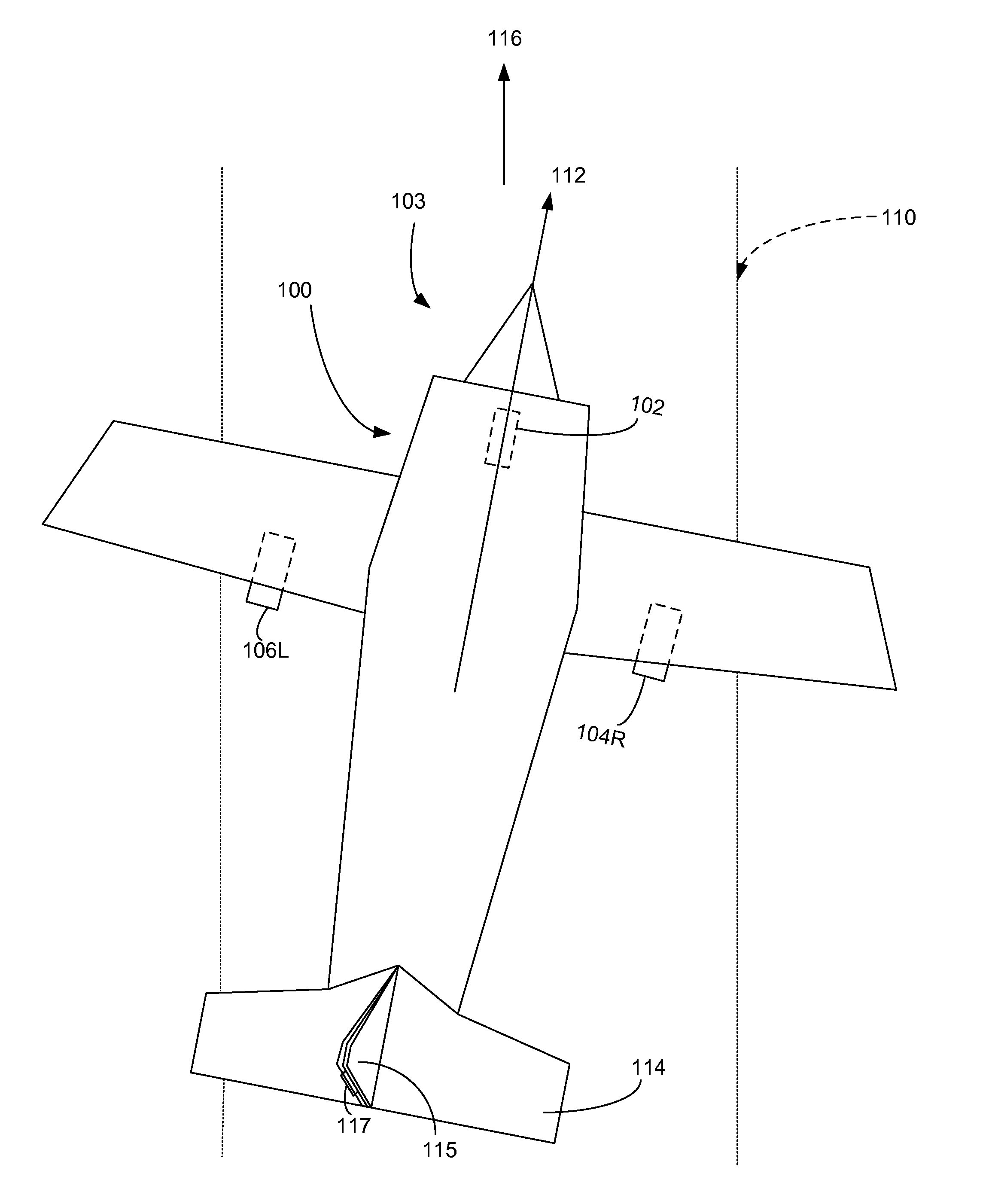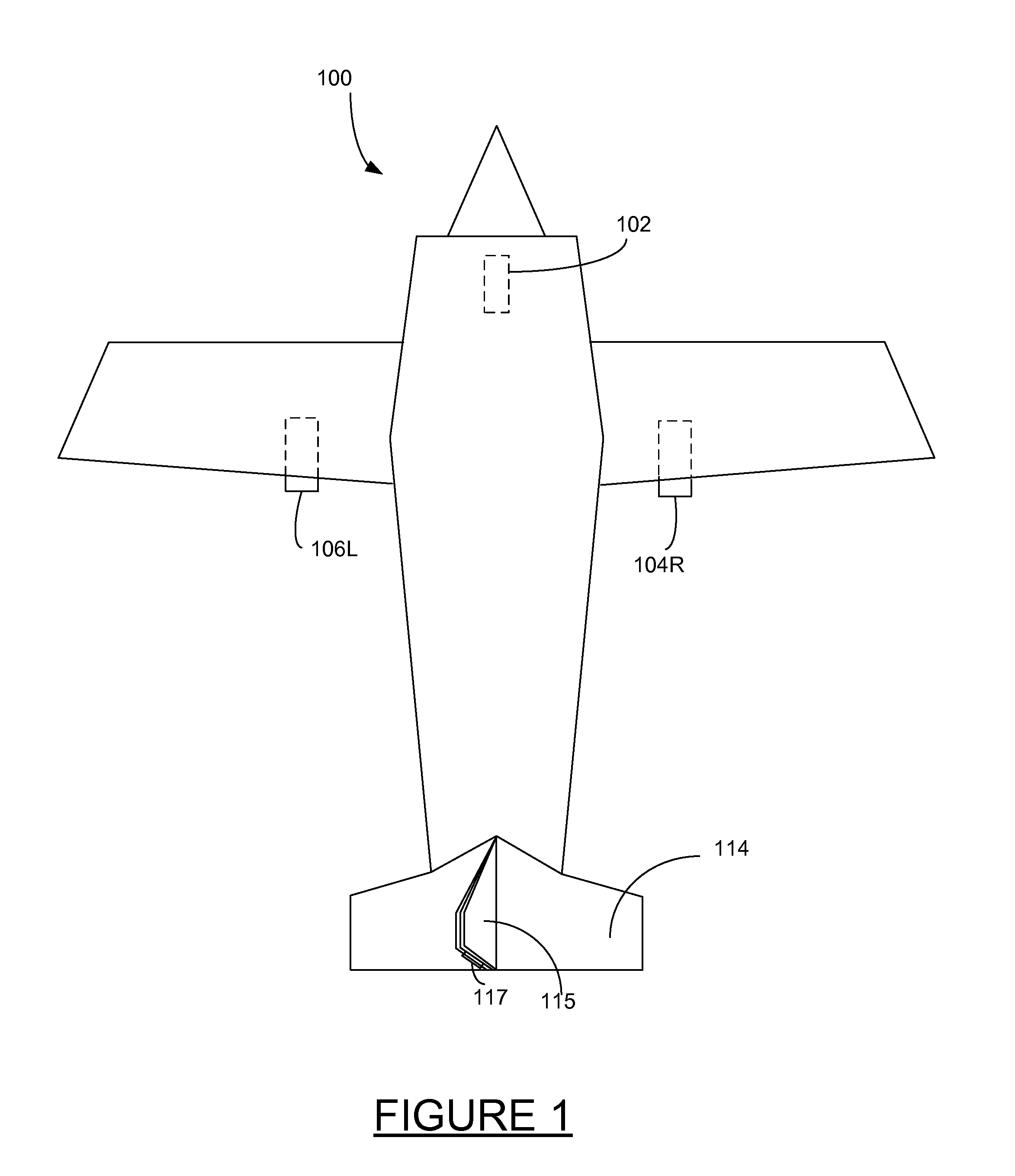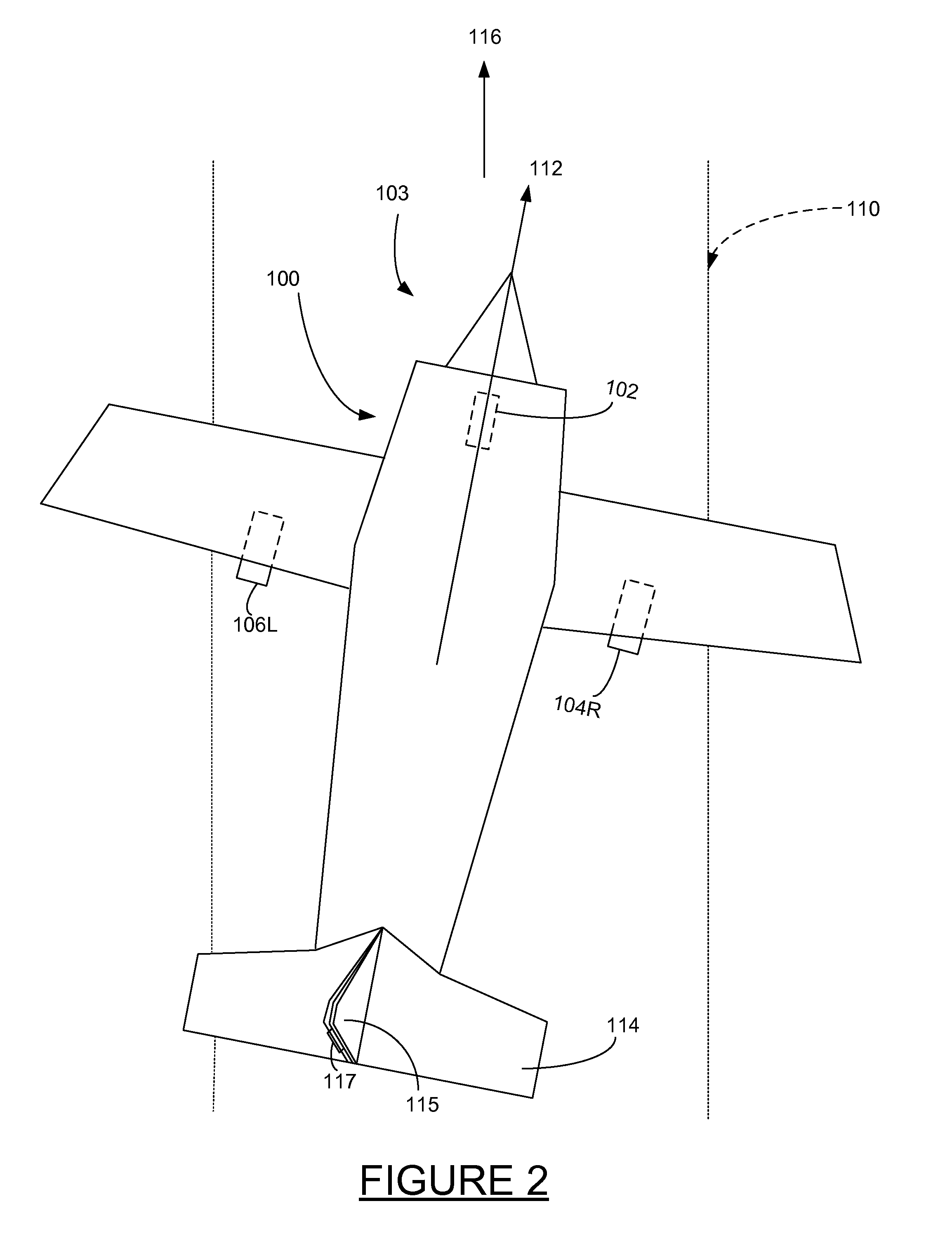Antilock Braking System With Directional Control
- Summary
- Abstract
- Description
- Claims
- Application Information
AI Technical Summary
Benefits of technology
Problems solved by technology
Method used
Image
Examples
Embodiment Construction
[0017]Embodiments of the present invention provide systems and methods for an antilock braking system that enables a pilot to maintain directional control of an aircraft travelling on the ground (e.g., a runway or other such surface) without manual differential braking. In this document, references are made to directions such as left, right, front, back, and the like. These references are exemplary only and are used to describe the disclosed apparatus in a typical orientation or operation, but are not independently limiting.
[0018]Controlling the direction of an aircraft during braking can be challenging, particularly where strong crosswinds are present. On aircraft having a nosewheel steering, directional control on the ground is primarily accomplished using rudder control at higher aircraft speeds (where aerodynamic forces are significant), and via the nosewheel steering at lower speeds. Differential braking and / or differential thrust may also be used as secondary directional contr...
PUM
 Login to View More
Login to View More Abstract
Description
Claims
Application Information
 Login to View More
Login to View More - R&D
- Intellectual Property
- Life Sciences
- Materials
- Tech Scout
- Unparalleled Data Quality
- Higher Quality Content
- 60% Fewer Hallucinations
Browse by: Latest US Patents, China's latest patents, Technical Efficacy Thesaurus, Application Domain, Technology Topic, Popular Technical Reports.
© 2025 PatSnap. All rights reserved.Legal|Privacy policy|Modern Slavery Act Transparency Statement|Sitemap|About US| Contact US: help@patsnap.com



